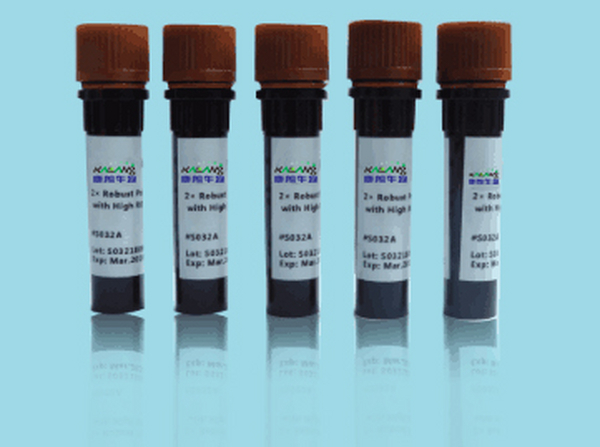QQ:3002763590
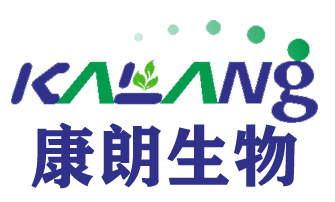

客服电话:021-61998208
IgM Chain C rabbit Polyclonal Antibody
IgM Chain C抗体
IgM Chain C抗体应用:IHC-p: 100-300.WB 1:500-2000, ELISA 1:10000-20000 immunoglobulin heavy constant mu(IGHM) Homo sapiens Immunoglobulins (Ig) are the antigen recognition molecules of B cells. An Ig molecule is made up of 2 identical heavy chains and 2 identical light chains (see MIM 147200) joined by disulfide bonds so that each heavy chain is linked to a light chain and the 2 heavy chains are linked together. Each Ig heavy chain has an N-terminal variable (V) region containing the antigen-binding site and a C-terminal constant (C) region, encoded by an individual C region gene, that determines the isotype of the antibody and provides effector or signaling functions. The heavy chain V region is encoded by 1 each of 3 types of genes: V genes (see MIM 147070), joining (J) genes (see MIM 147010), and diversity (D) genes (see MIM 146910). The C region genes are clustered downstream of the V region genes within the heavy chain locus on chromosome 14. The IGHM gene encodes the C region of the m
IGS21 rabbit Polyclonal Antibody
IGS21抗体
IGS21抗体应用:WB 1:500-2000 This gene encodes a protein which has two immunoglobulin (Ig) domains and is a member of the immunoglobulin superfamily. Proteins in this superfamily are usually found on or in cell membranes and act as receptors in immune response pathways. [provided by RefSeq, Sep 2011],
IGSF4B rabbit Polyclonal Antibody
IGSF4B抗体
IGSF4B抗体应用:Western Blot: 1/500 - 1/2000. Immunohistochemistry: 1/100 - 1/300. Immunofluorescence: 1/200 - 1/1000. ELISA: 1/5000. cell adhesion molecule 3(CADM3) Homo sapiens IGSF4B is a brain-specific protein related to the calcium-independent cell-cell adhesion molecules known as nectins (see PVRL3; MIM 607147) (Kakunaga et al., 2005 [PubMed 15741237]).[supplied by OMIM, Mar 2008],
IGSF4C rabbit Polyclonal Antibody
IGSF4C抗体
IGSF4C抗体应用:Western Blot: 1/500 - 1/2000. Immunohistochemistry: 1/100 - 1/300. Immunofluorescence: 1/200 - 1/1000. ELISA: 1/20000.function:Involved in the cell-cell adhesion. Has calcium- and magnesium-independent cell-cell adhesion activity. May have tumor-suppressor activity.,PTM:N-glycosylated.,similarity:Belongs to the nectin family.,similarity:Contains 1 Ig-like V-type (immunoglobulin-like) domain.,similarity:Contains 2 Ig-like C2-type (immunoglobulin-like) domains.,subunit:Monomer and homodimer.,tissue specificity:Expressed in brain, prostate, brain, kidney and some other organs.,
IGSF4D rabbit Polyclonal Antibody
IGSF4D抗体
IGSF4D抗体应用:Western Blot: 1/500 - 1/2000. Immunohistochemistry: 1/100 - 1/300. Immunofluorescence: 1/200 - 1/1000. ELISA: 1/10000. cell adhesion molecule 2(CADM2) Homo sapiens This gene encodes a member of the synaptic cell adhesion molecule 1 (SynCAM) family which belongs to the immunoglobulin (Ig) superfamily. The encoded protein has three Ig-like domains and a cytosolic protein 4.1 binding site near the C-terminus. Proteins belonging to the protein 4.1 family crosslink spectrin and interact with other cytoskeletal proteins. Multiple transcript variants encoding different isoforms have been found for this gene. [provided by RefSeq, Feb 2012],
Ihh rabbit Polyclonal Antibody
Ihh抗体
Ihh抗体应用:Western Blot: 1/500 - 1/2000. ELISA: 1/20000. indian hedgehog(IHH) Homo sapiens This gene encodes a member of the hedgehog family of proteins. The encoded preproprotein is proteolytically processed to generate multiple protein products, including an N-terminal fragment that is involved in signaling. Hedgehog family proteins are essential secreted signaling molecules that regulate a variety of developmental processes including growth, patterning and morphogenesis. The protein encoded by this gene specifically plays a role in bone growth and differentiation. Mutations in this gene are the cause of brachydactyly type A1, which is characterized by shortening or malformation of the fingers and toes. Mutations in this gene are also the cause of acrocapitofemoral dysplasia. [provided by RefSeq, Nov 2015],
IK rabbit Polyclonal Antibody
IK抗体
IK抗体应用:Western Blot: 1/500 - 1/2000. Immunohistochemistry: 1/100 - 1/300. ELISA: 1/20000. IK cytokine, down-regulator of HLA II(IK) Homo sapiens The protein encoded by this gene was identified by its RED repeat, a stretch of repeated arginine, glutamic acid and aspartic acid residues. The protein localizes to discrete dots within the nucleus, excluding the nucleolus. Its function is unknown. This gene maps to chromosome 5; however, a pseudogene may exist on chromosome 2. [provided by RefSeq, Jul 2008],
IK1 rabbit Polyclonal Antibody
IK1抗体
IK1抗体应用:Western Blot: 1/500 - 1/2000. ELISA: 1/20000. potassium calcium-activated channel subfamily N member 4(KCNN4) Homo sapiens The protein encoded by this gene is part of a potentially heterotetrameric voltage-independent potassium channel that is activated by intracellular calcium. Activation is followed by membrane hyperpolarization, which promotes calcium influx. The encoded protein may be part of the predominant calcium-activated potassium channel in T-lymphocytes. This gene is similar to other KCNN family potassium channel genes, but it differs enough to possibly be considered as part of a new subfamily. [provided by RefSeq, Jul 2008],
Ikaros 3 rabbit Polyclonal Antibody
Ikaros 3抗体
Ikaros 3抗体应用:Western Blot: 1/500 - 1/2000. ELISA: 1/10000. IKAROS family zinc finger 3(IKZF3) Homo sapiens This gene encodes a member of the Ikaros family of zinc-finger proteins. Three members of this protein family (Ikaros, Aiolos and Helios) are hematopoietic-specific transcription factors involved in the regulation of lymphocyte development. This gene product is a transcription factor that is important in the regulation of B lymphocyte proliferation and differentiation. Both Ikaros and Aiolos can participate in chromatin remodeling. Regulation of gene expression in B lymphocytes by Aiolos is complex as it appears to require the sequential formation of Ikaros homodimers, Ikaros/Aiolos heterodimers, and Aiolos homodimers. Several alternative transcripts encoding different isoforms have been described, as well as some non-protein coding variants. [provided by RefSeq, Apr 2012],
最新动态
-
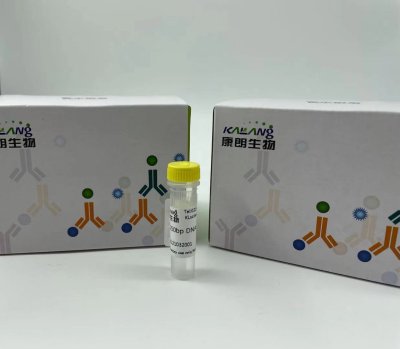
Anti-GNGT1 KL20092-001(50ul)
2021-10-11 -

Anti-GNGT1 antibody(50ul) KL20093-001
2021-10-11 -
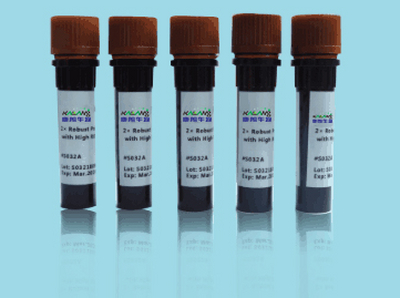
MUC5AC (PT2058) mouse Monoclonal Antibody
2021-01-06 -

mOrange mouse Monoclonal Antibody(Mix)
2021-01-05
热门标签
- Histone H3 rabbit Polyclonal Antibody Histone H3抗体
- EGFR rabbit Polyclonal Antibody EGFR抗体
- Cy3 Conjugated
- AbFluor™ 555 Conjugated
- AbFluor™ 680 Conjugated
- AbFluor™ 350 Conjugated
- AbFluor™ 647 Conjugated
- AbFluor™ 594 Conjugated
- AbFluor™ 405 Conjugated
- Cy5 Conjugated
- AbFluor™ 488 Conjugated
- Cyclophilin B抗体 Cyclophilin B Monoclonal Antibody(2B10)
- COX IV抗体 COX IV Monoclonal Antibody(6C8)
- PCNA抗体 PCNA Monoclonal Antibody(12D10)
- FAK rabbit Polyclonal Antibody FAK抗体
邮箱:3002763590@qq.com
电话:021-61998208
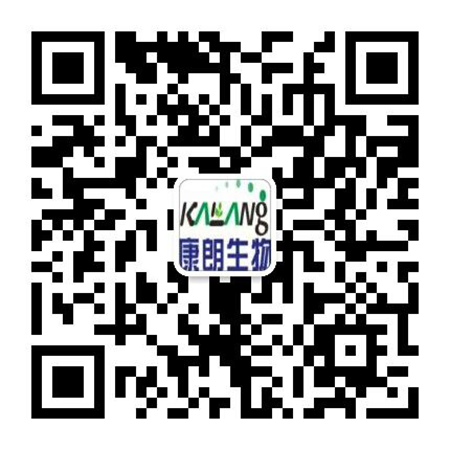
扫码关注微信公众号



